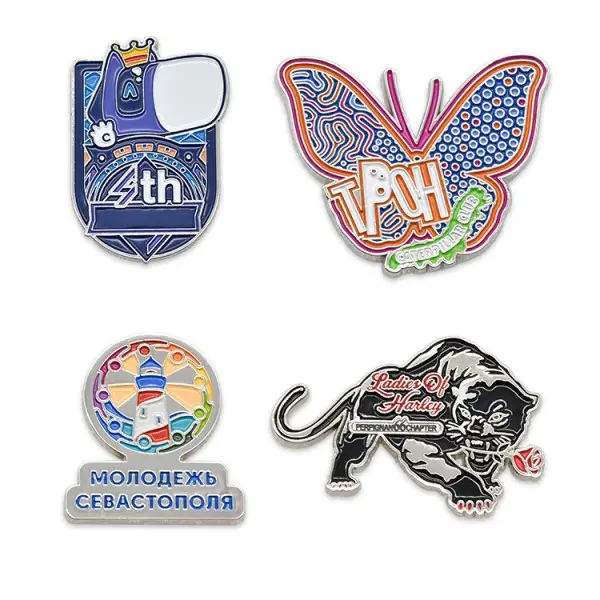Custom pins are usually a process involving design, production and post-processing. Here are the general steps to customize a pin:
1. Demand determination: First of all, customers need to clarify the purpose, quantity, size, material, shape and budget requirements of customized pins.
2. Design stage:

○ Customers can provide their own design sketches or samples.
○ If the customer does not have a ready-made design, you can cooperate with the manufacturer’s designer, the designer will create a design according to the customer’s needs.
Once the design is finalized, a detailed drawing or 3D model is usually produced.
3. Proof confirmation: Before mass production, manufacturers usually make one or more samples for customers to confirm whether the design, color and size meet the requirements.
4. Modification and improvement: According to customer feedback, make necessary modifications to the sample until the customer is completely satisfied.
5. Production stage:
○ Mold production: according to the final confirmed design production mold.
Stamping/die casting: Metal (such as copper, iron, stainless steel or aluminum) is used to produce the initial shape of the pin by stamping or die casting.
○ Polishing: The surface of the pin is polished to make it smooth.
6. Surface treatment: According to the design requirements, the pin is electroplated, painted, painted or anodized and other surface treatment to give it the required color and luster.
7. Assembly: If the pin design is complex and contains multiple parts, it needs to be assembled.
8. Quality inspection: After each stage of the production process, a quality inspection is carried out to ensure that the pin is free of defects.
9. Packaging: According to customer requirements for packaging, may be individual packaging or batch packaging.
10. Delivery: Finally, the finished pins are delivered according to the customer’s requirements, which may include local distribution or international shipping.
The process of customizing pins requires close communication between the customer and the manufacturer to ensure that the final product can meet the customer’s expectations and quality requirements.
Post time: Oct-10-2024
